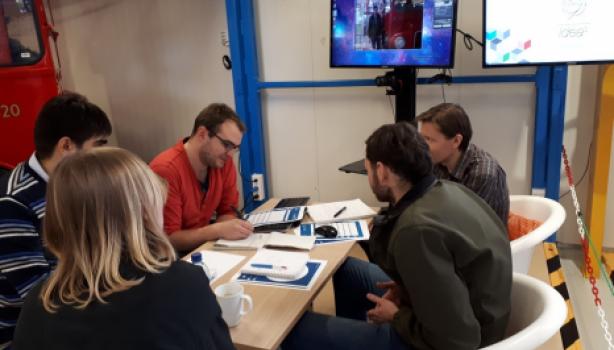Header Image: ATLAS detector (Image: CERN)
For the HL-LHC Collider-Experiment Interface Work Package, their LS3 started last January with the manoeuvres to remove the ATLAS end cup toroid (JTT) shielding.
Why start in LS2 something planned for LS3?
Mainly because the activation of the components in the JTT shielding region will be 25 times higher during LS3 than was during LS1 and so we should try to advance any work that is feasible to reduce future doses to personnel.
The transition between the LHC tunnel and the experimental caverns is the most difficult region in terms of accessibility of the full ring. Currently, there are a number of machine components belonging to the vacuum and beam instrumentation systems located at that precise place, just behind the Target Absorber for Secondaries. Moving them to the experimental caverns (in the IP side of the TAS) would offer a safer environment for interventions, adding the possibility to operated them remotely and so reduce the workers exposition to radiation.
However, space in the experimental caverns is rare. Every millimetre is taken when opening of the detectors for routine maintenance tasks . After more than one year of collaborative effort and some compromises, a solution was found to relocate the VAX. In the case of ATLAS, the first of the implications foreseen to host the future VAX being compatible with detector openings was the modification of the JTT shielding.
From the 14th to the 31st January the ATLAS JTT was removed thanks to the ATLAS and CERN Engineering department teams. The transport procedure had to be completely rethink as we did not had any more a not yet completely installed experiment as was the case in 2006. A new support structure and a crab system was installed to allow the removal of the 13 Tones casted iron and boride polyethylene shielding that today is already stored in CERN ISRs waiting for its final treatment.
The new JTT units are today under construction in Pakistan. HMC3, that already contributed to the ATLAS experiment under the supervision of PAEC, should deliver them before the end of LS2. The new pieces have an innovative design compatible with the VAX.
Always having in mind personnel safety, the ATLAS forward shielding blocks will be machined during LS2. This operation requires handling of close to 100T pieces.
From the CMS side work is also frenetic. The new support for the VAX will be already installed during LS2 allowing the relocation of other vacuum equipment, while the forward shielding will also be modified in prevision of the new VAX modules.
The new VAX for ATLAS and CMS is nowadays in its prototyping phase. A new vacuum chamber handling and support compatible with remote operations and the new layout is under construction, and will be thoroughly tested with the collaboration of different CERN groups: Experimental Areas, Vacuum, Transport, Survey and Mechatronics.


